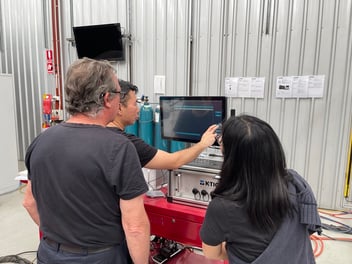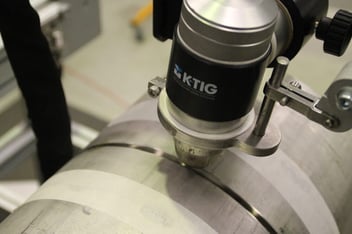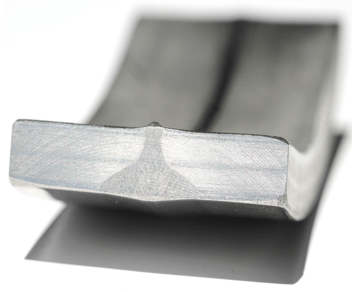Welding Undercuts: How They Undercut Quality
What are undercuts in welding?
Undercuts are grooves on the base metal that form due to improper technique, incorrect materials, or excessive temperatures. Prevention comes down to physics. Strong attention to detail is essential when it comes to working at the correct angle, applying the right current or voltage, and choosing filler material less prone to this negative result. An even distribution of the right amount of heat, as well as the angle at which the heat is being applied, can play a significant role in the results of this potential error.
.jpg?width=800&height=500&name=Example%20of%20an%20Undercut%20(800%20%C3%97%20500%20px).jpg)
An undercut welding defect is shown here.
Different materials tolerate different amounts of heat, meaning that when the wrong types of metal meet the wrong temperature, an undercut can occur. With cracking being a major potential weakness in the aftermath of an undercut, it is important to note that welders are more likely to face the structural impacts of this flaw if the materials being worked are high-carbons, for example, or are intended for use in cyclically loaded applications.
But how bad can undercuts get?
The Results of Weld Undercutting
According to the American Welding Society (AWS) Code, the official welding code book, undercuts are a significant design flaw because of the safety issues that can occur when too much stress is applied to loaded joints. Local yielding, as well as brittle fracture, are possible results. Keeping welds undercut-free ensures safety, reliability, and quality in a product.
Most importantly, undercuts can cause extreme weakness in the structural integrity of a welding joint. Low thickness areas are the first to crack, and cracks can lead to a snowball effect of destruction. In fact, cracks can grow at infinitesimally small rates — in one case, with an American Iron and Steel Institute (AISI) 4140 shaft, an undercut went unnoticed, and the crack grew two hundredths of an inch (0.02”) per day. It took 18 months for the final failure to occur. Although the crack grew at only 0.0000000019 (1.9 x 10-8) feet per second, it had devastating effects. Once the crack expanded to its full capacity, it caused brittle fracture that occurred with almost no warning. The catastrophe that undercuts can cause are costly, time consuming, and highly unwanted.
Although undercut welds are technically repairable, low-heat solutions can be problematic in larger welded sections of a part or component due to the possibility of causing hydrogen-induced cracking, which is a type of cold crack. Cold cracks often form several days after a weld has been completed, making them particularly time-sensitive setbacks to productivity.
From accelerated corrosion to significant fatigue, undercuts make harsh impacts on quality, strength, and the overall stability of the welding process. However, our industry-leading technology brings perfectionist-friendly results without concern for such well known defects.
Our processes are up to 30 times faster than traditional welding methods, and our customers benefit from improvements in efficiency, quality, and profitability after implementing our systems, turnkey welding packages, and advanced integrated systems. We offer lower distortion, excellent repeatability, and excellent results with non-corrosive materials, as well as greener and lighter metalwork, for increased efficiency. Want to learn more about K-TIG Technology? Contact Us or view a demo.
Discover the advantages of our robotic welding systems in your industry.
Watch a live demonstration of our automated robotic stainless steel welder machine.
Learn about food grade welding, automatic welding machine benefits, or edge joint welding.
Read more welding articles.




